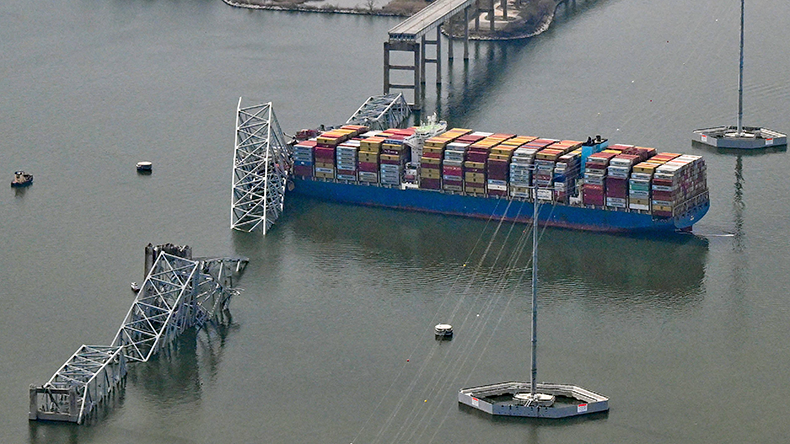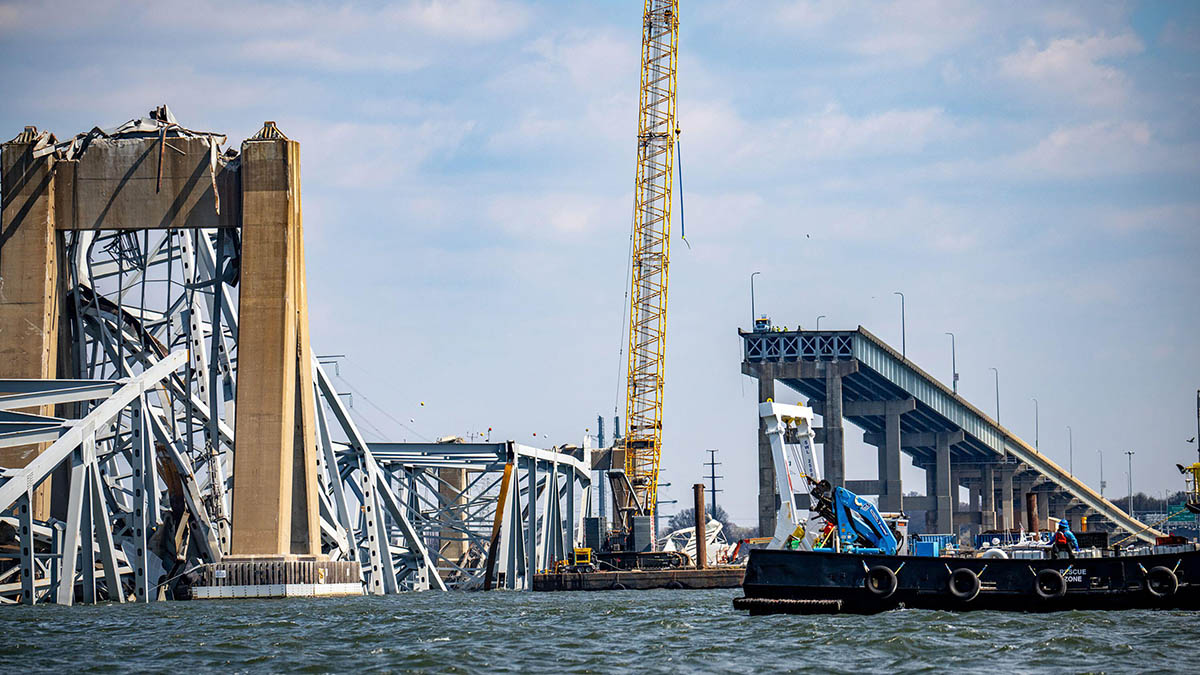Baltimore bridge may be allocated share of fault after boxship allision, US lawyer tells IUMI
Deadline for claims arising from casualty imminent
Crew of Dali may take the fifth, under constitutional provision against self-incrimination
NOT only are the owners of the boxship that brought down a bridge in Baltimore likely to succeed in their claim for exoneration or limitation of liability, but the bridge may even be allocated a share of the fault, a marine insurance audience has been told.
James Mercante, a partner at the Gallo Vitucci Klar firm in New York, was speaking at the International Union of Marine Insurance conference in Berlin on Monday afternoon.
Mercante pointed out that the very first litigation resulting from the Dali (IMO: 9697428) casualty was a petition brought by owners under the US Limitation of Liability Act ( (LOLA) of 1851.
If successful, insurer exposure — which rests initially with the London-based Britannia P&I Club — would be capped commensurately.
In most countries, limitation is governed by the Convention on Limitation of Liability for Maritime Claims 1976, known as LLMC. But the US is not a signatory and handles the matter through LOLA, which is not as rigorous as the convention.
Under this legislation, the limitation — except for claims related to personal injury and wrongful death — is based on the value of the ship and the earnings from the voyage during which the casualty occurred.
Crucially, this bears no relationship whatsoever to the amount of damage caused by the incident. A vessel is not held responsible for damage to a fixed object unless the allision is caused by a deficiency in the vessel or by negligence or a wilful act on the part of its crew. The burden of proving freedom from fault lies with the owners.
LOLA was used to limit the liability of passenger liner Titanic, which famously sank in 1912 with the loss of over 1,517 lives. In consequence, the liability fund was capped at the value of the 17 surviving lifeboats, said Mercante.
Resorting to LOLA was the obvious move for the owners of Dali, who deny any liability for any losses, or alternatively, argue that any liability should be capped at just under $44m.
The deadline for claims resulting from the casualty is September 24, so the figure will be known next week.
John Garamendi, a California Democrat, has tabled a bill that would open up the Dali owners to a 10 times higher threshold. But Mercante maintained that it will probably be found unconstitutional to target foreign, but not US shipowners.
The case may take seven to 10 years to decide, and will be heard by a judge, with no jury.
Witnesses are likely to include the vessel’s crew, who have still not been allowed to leave Maryland. Some of them are expected to assert their rights under the fifth amendment to the US constitution, which offers safeguards against self-incrimination.
The owners will have to prove nothing, and it will be down to the claimants to prove the ship was at fault. The test will revolve around the owners’ privity or knowledge of any faults with the ship.
Fault will be allocated on a percentage basis, and a lack of maintenance could result in a share of the fault being assigned to the bridge, which could reduce the exposure of the owners and insurers.
It is even open to the judge to rule that the bridge constituted an obstruction to navigation.
Marine equipment manufacturers may also be allocated a percentage share of fault if issues with the circuit breaker panels are found to have been a factor, as has been widely contended.
Furthermore, the Baltimore or Maryland local authorities will not be able to claim for a bridge that is higher or carries more traffic lanes than the demolished one, as this would constitute what lawyers refer to as betterment.
The analogy is to a claim for damage to a black and white television, Mercante went on.
While a court would accept that it should be replaced by a colour television, as black and white models are no longer available, replacement with a top of the range flatscreen model would not be permitted.
Mauricio Garrido, president of US salvage firm T&T Salvage, insisted that the Baltimore bridge collapse should not be seen as a so-called black swan event.
Ship-to-bridge allisions have been happening for a long time. There has even been one in Germany in recent days.
A 1983 US National Academies paper on the subject contains findings that remain valid even now.
As a salvor, Garrido admitted that salvage operations are becoming more expensive. But the questions for insurers are whether their actuaries are correctly calculating their likely frequency, and whether the premiums collected match the probabilities involved.




